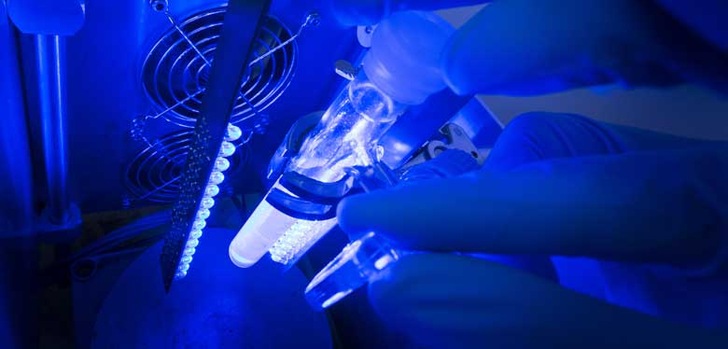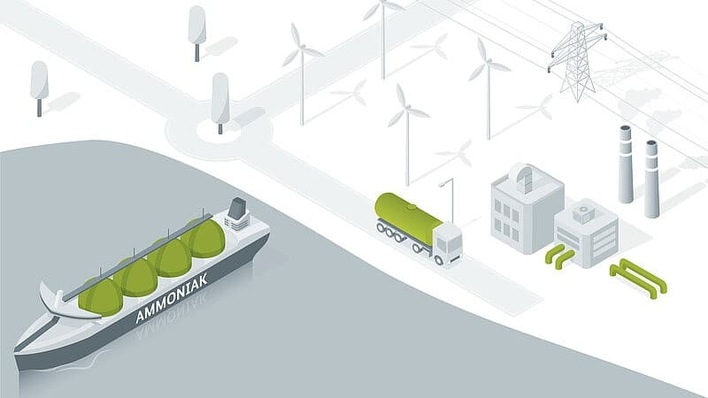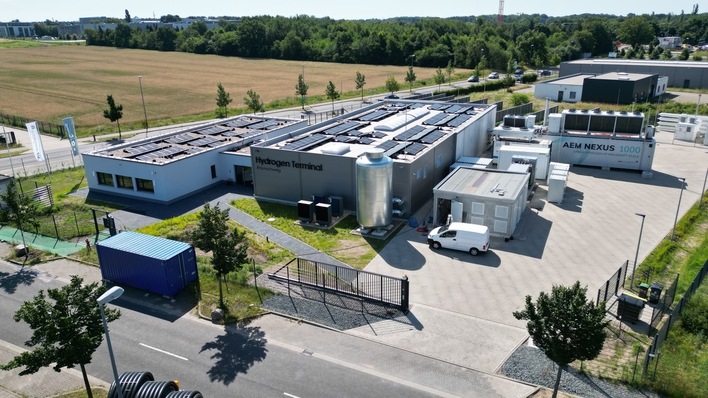
The new molecule is a type of covalent photosensitizer–polyoxometalate (PS-POM) dyad. Dyad means that the compound fulfills two functions: one part of the molecule is responsible for the transfer of electrons and another part stores the energy. The exact name of the molecule does not appear in the publication. “The name would be about four lines long,” explained Dr. Sven Rau of the Institut für Anorganische Chemie der Universität Ulm (institute for inorganic chemistry at the university Universität Ulm).
The substance is liquid at ambient conditions, which makes storage easier. If you bring it together with a substance that emits electrons when exposed to light, each storage molecule takes up two electrons. If the substance is stored in the dark and in the absence of air, the molecules retain the electrons and don’t release them until positive hydrogen ions (H+) are added. This can be done for example with an acid. In the experiment, the researchers used sulfuric acid.
The hydrogen ions react with the stored electrons to form hydrogen. The reaction of the storage molecule is reversible. This means that it can be charged and discharged with electrons again and again. The research team was not only the first to show how the hydrogen can be produced with the help of light, they could also control the timing of this reaction in such a way that it can be used for energy storage.
The next steps entail some optimization work. For example, the efficiency so far is still very low. “We have shown that it works. Now we, and all other scientists, can increase the efficiency,” said Rau. “In addition, a number of the loaded molecules react prematurely, and according to a yet completely unknown mechanism,” he said. In the first experiments, one sixth of the stored electrons were lost within 150 minutes. However, Rau thinks storage for days or weeks is possible, “in principle also longer.”
The to-do list also includes the search for a suitable reactor design as well as for sustainable and cost-effective reagents. For example, instead of the nitrogen compound now used, an alcohol could be used as an electron donor. Or in the far future, even water, which could directly supply the H+ ions.
Although this temporary energy storage technique is unique, researchers from Ulm are not the only ones looking for a photoelectric route to hydrogen. The Helmholtz-Zentrum Geesthacht, for example, is working on an artificial leaf. What all methods have in common, however, is that they are still in the laboratory stage.
Author: Eva Augsten








